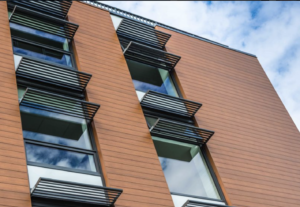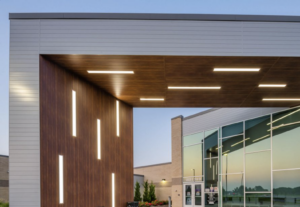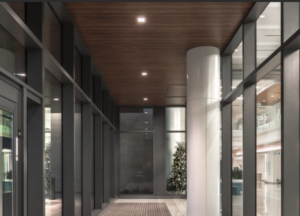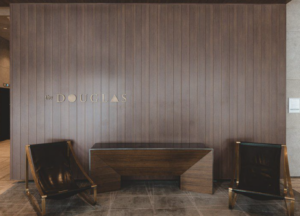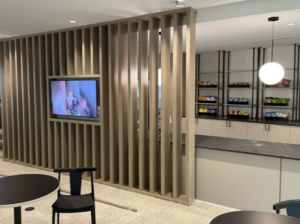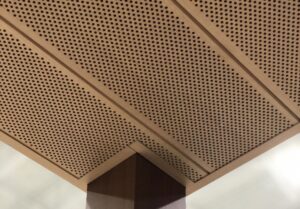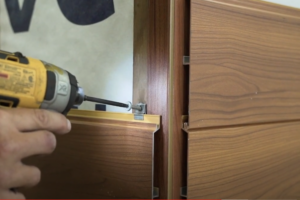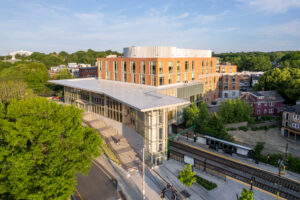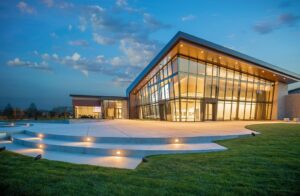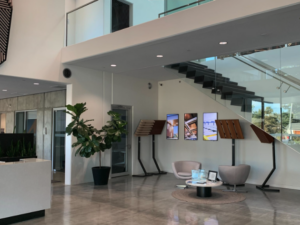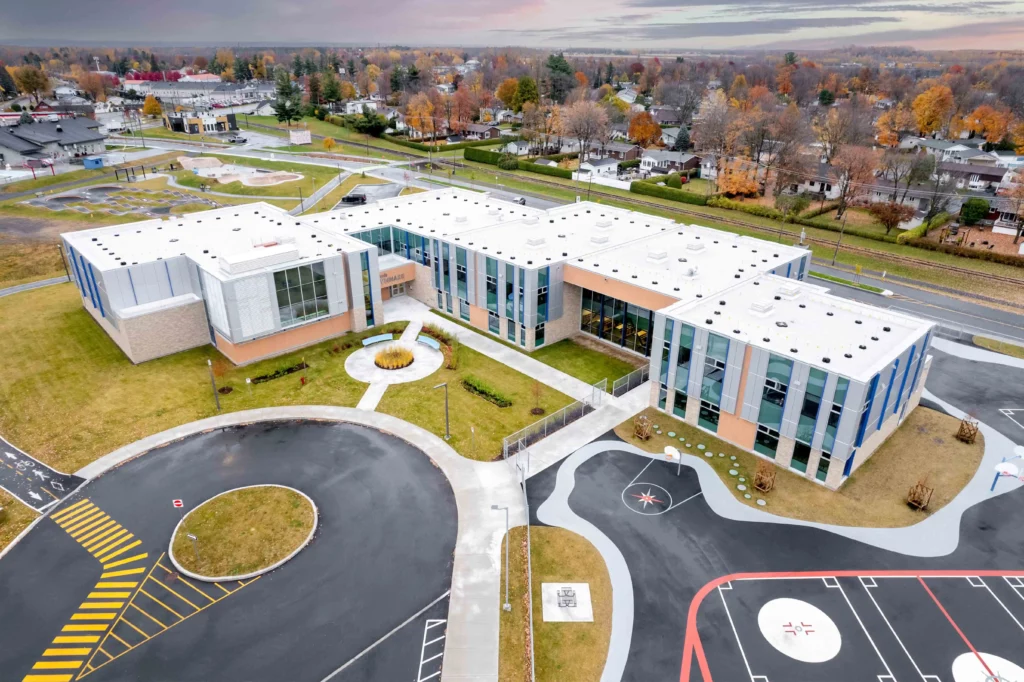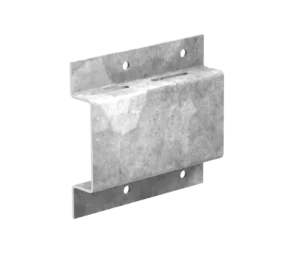Content Type:
Trends
Project Type:
-
System Name:
T&G Planks
Installation:
Exterior
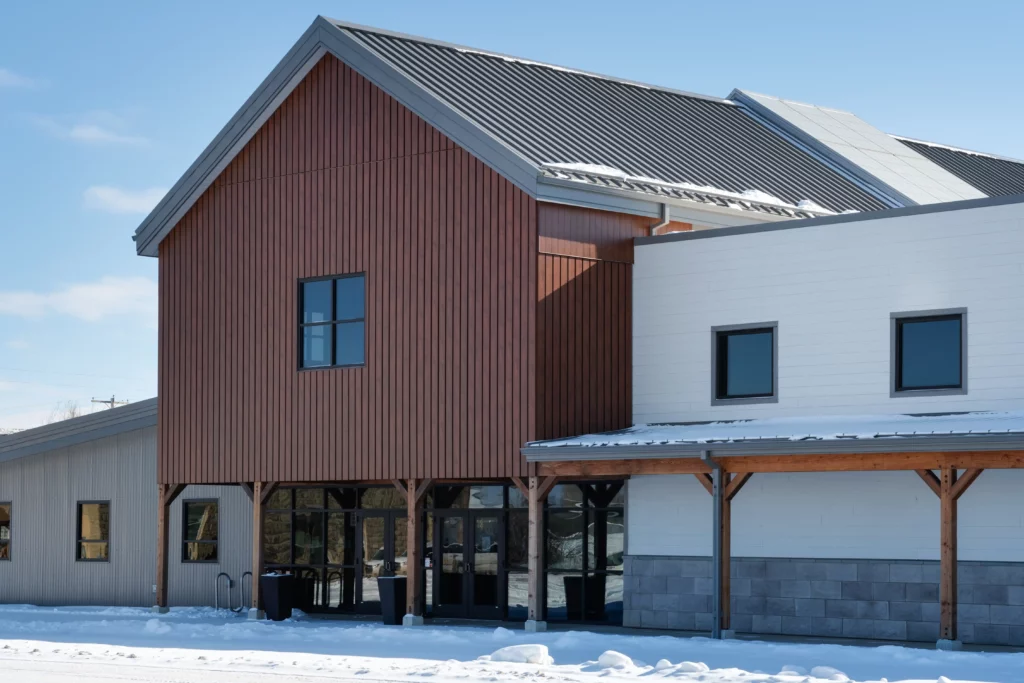
Petroleum County Community Centre, 6″ Link & Lock Battens & 6″ V-Groove Planks in Dark Antique Oak.
Sociologists refer to third places (or third spaces) as the social environments that are neither one’s home (the “first” place) nor workplace/school (the “second” place). In other words, a third place is a neutral ground where people gather informally simply to enjoy companionship and community. Classic examples include cozy coffee shops, neighborhood pubs, barber shops, libraries, parks, community centers, gyms, and other hangouts open to all. Ray Oldenburg, who popularized the term in his 1989 book The Great Good Place, described third places as the “living room” of society – distinct from home and office, yet just as essential.
Third places can take many forms. What they share is a convivial atmosphere, low or no cost of entry, and regular habitués who form a loose but welcoming network of “regulars.” They are “home away from home” – the kind of spot where you might not know everyone’s name, but you feel you belong.
Why Third Places Matter
After nearly three years of a deadly COVID-19 pandemic that forced people to isolate at home, third places have been thrust into the spotlight as an essential ingredient of everyday life. Without casual hangout spots, loneliness and disconnection surged. Humans are social creatures; we crave places to simply be together.
Research confirms that third places boost mental and physical health, build social capital, and support a sense of belonging. Yet they contribute more to quality of life than to GDP. They serve as informal infrastructure for community vitality, creating networks and civic engagement.
Despite this, a lack of empirical data often leaves third places marginalized in urban planning. But new studies are beginning to show links between third-place density and community well-being. The benefits—emotional, mental, and cultural—are real, even if hard to quantify.
America’s Vanishing Third Places
In mid-20th-century America, third places thrived—from bowling alleys to diners and VFW halls. But suburban sprawl, car-centric planning, and the rise of big-box stores hollowed out many local, human-scale spaces. Public plazas often became sterile “technical concessions,” not social destinations.
Today, Americans spend far less time in third places. From 2014 to 2019, time with friends dropped by 37%. Lockdowns during COVID only deepened the loss. Many third places didn’t survive the pandemic. Social media and online life can’t fully replace them.
By the Numbers: Third Places in the U.S. Over Time
- Public libraries: 8,846 systems in 1995; 9,057 by 2019 – minimal growth despite rising population.
- Bowling centers: Down 32% from 2005 to 2023.
- Coffee shops: Grew from ~17,000 in the early 2000s to ~38,400 in 2022.
- Civic clubs/churches: Declining attendance and closures.
While some types faded, others rose—mostly commercial. Yet many Americans report they now struggle to find genuine, welcoming third places.
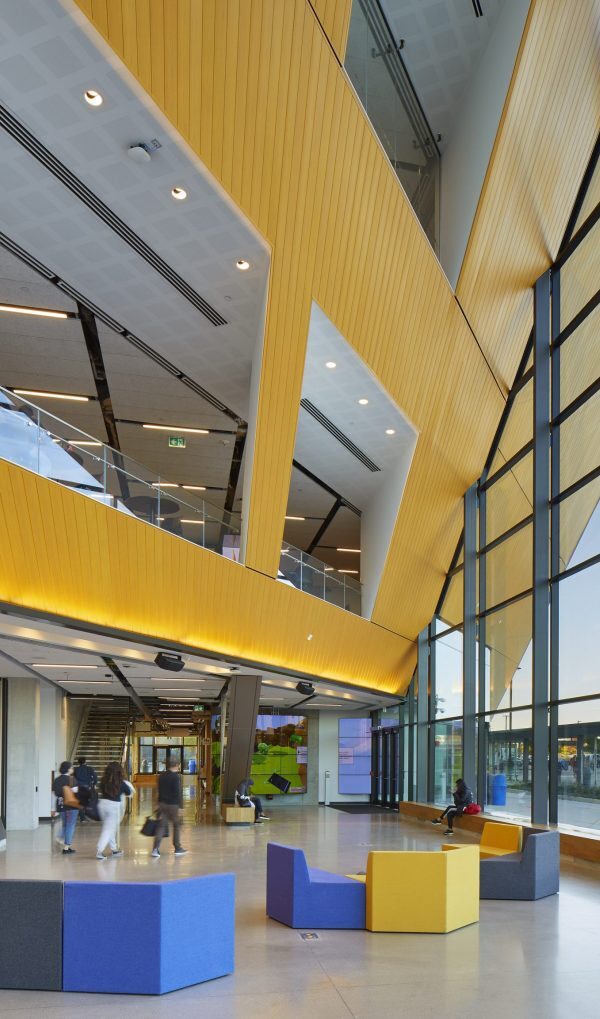
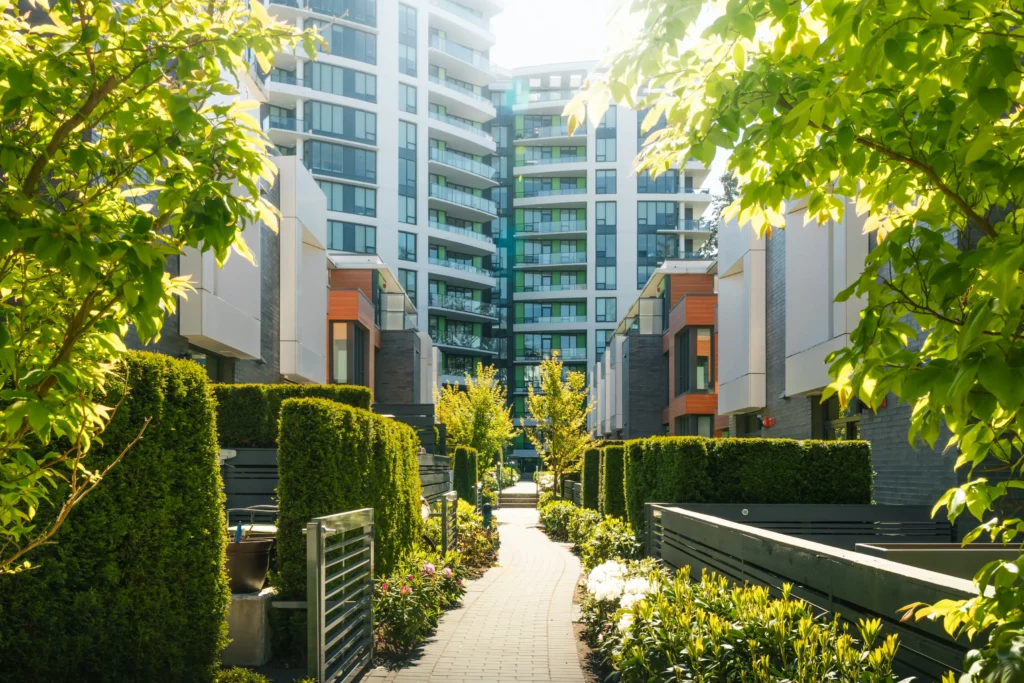
Third-Place Culture Around the World
Spain: Plaza Culture
Spain’s public plazas function as open-air living rooms. They are social hubs for all ages, day and night. Their design—pedestrian-friendly, shaded, surrounded by cafés—invites lingering. These spaces are seen as essential public infrastructure. Spain demonstrates how generous, non-commercial gathering places elevate daily life.
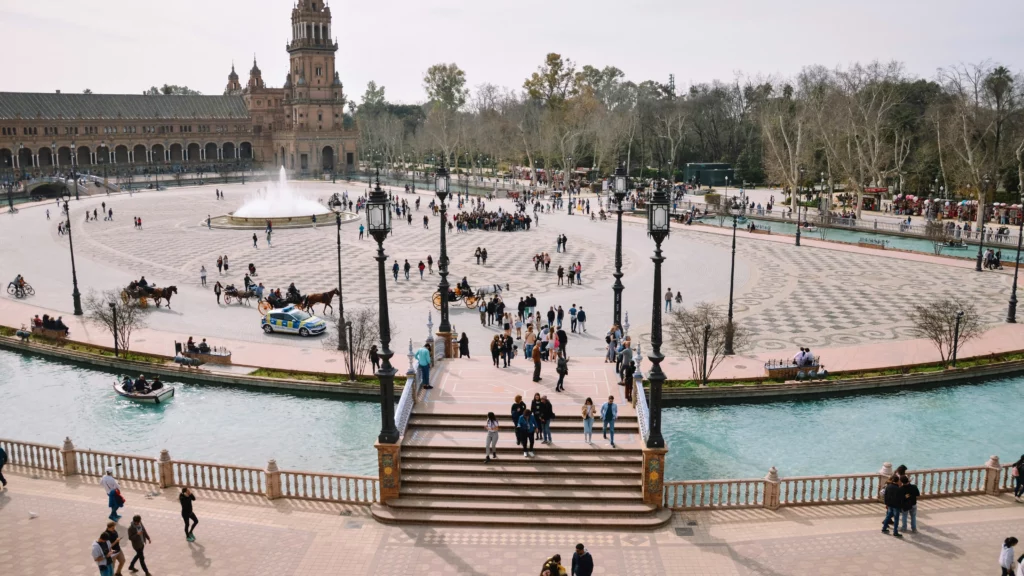
Plaza de España from Nana
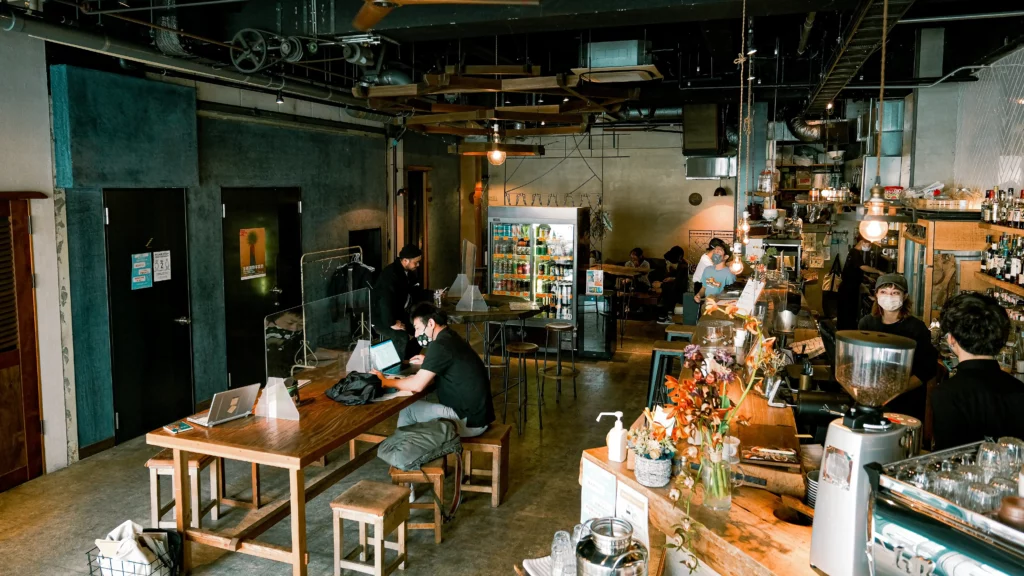
Kitssaten, Tokyo Japan from Takafumi Yamashita
Japan: Kissaten and Civic Design
Japan offers both cozy and civic third places. The kissaten—a nostalgic café—creates intimate connections across generations. On a larger scale, projects like Gifu Media Cosmos blend libraries, markets, and gathering spaces in flexible layouts. Even densely packed cities carve out peaceful, multipurpose social oases.
Brazil: Community Centers
Brazil’s Serviço Social do Comércio (SESC) centers, like SESC Pompéia, offer cultural and recreational amenities for all, designed for community not commerce. SESC is primarily funded through a payroll tax on commerce, tourism, and service businesses. These reused industrial spaces host music, sports, meals, and conversation.

SESC Pompéia from Archeyes
Designing Third Places: Five Key Considerations for Architects
- Accessibility & Inclusivity: Ensure entry for all income levels, ages, and abilities. Avoid hostile architecture; include multiple access points and welcoming design.
- Comfort & Amenities: Prioritize seating, shade, restrooms, water, Wi-Fi. Design for year-round usability.
- Flexibility: Spaces should support quiet, activity, events, and rest—all within a single layout.
- Programming: Design with built-in engagement opportunities—playgrounds, markets, open stages, and flexible furniture.
- Longevity & Sustainability: Use durable, low-maintenance materials like aluminum cladding, which is fire and corrosion-resistant. Combine robust surfaces (concrete, metal) with environmentally sustainable features like solar or rainwater systems.
Bringing Third Places Back Home
Third places are not nostalgic relics—they are essential infrastructure for belonging, health, and community. America can take cues from Spain, Japan, and Brazil to reintegrate these shared spaces into everyday life. With thoughtful design and civic investment, we can make third places a pillar of 21st-century American cities.
We must build them—and then actively support and value them. That may mean new zoning laws, public grants, or just more time to gather. Community isn’t created by accident—it’s built through space, care, and shared experience.
Sources
- Oldenburg, Ray. The Great Good Place. Paragon House, 1989.
- Urban Institute, “How Third Places Contribute to Thriving Communities,” July 2024.
- Devika Rao, “The unfortunate, ongoing disappearance of ‘third places’” The Week, March 26, 2024.
- “Our Vanishing ‘Third Places’” Planning Commissioners Journal, 1997.
- Robert Putnam, Bowling Alone, Simon & Schuster, 2000.
- Williams & Hipp, “How Great and How Good? Third Places, Neighbor Interaction, and Cohesion,” Social Science Research 77 (2019).
- American Library Association, “Number of Libraries in the U.S.,” 2021.
- Spectrum News (Wisconsin), “Bowling popularity in decline,” Jan 28, 2025.
- Statista, “Number of coffee shops in the U.S.,” 2022.
- AFS USA, “Exploring Spanish Culture,” 2020.
- Sabukaru Online, “Introduction to Kissaten Culture,” 2021.
- Spoon & Tamago, “Gifu Media Cosmos: Toyo Ito’s New Library,” Aug 16, 2016.
- Arquitectura Viva, “SESC Pompéia Factory, São Paulo – Lina Bo Bardi,” 2012.
- Pacific Standard, “Library Parks Foster Community in Colombia,” Feb 28, 2012.
- Urban Design Lab, “Third Place Theory: Creating Community Spaces,” 2023.

